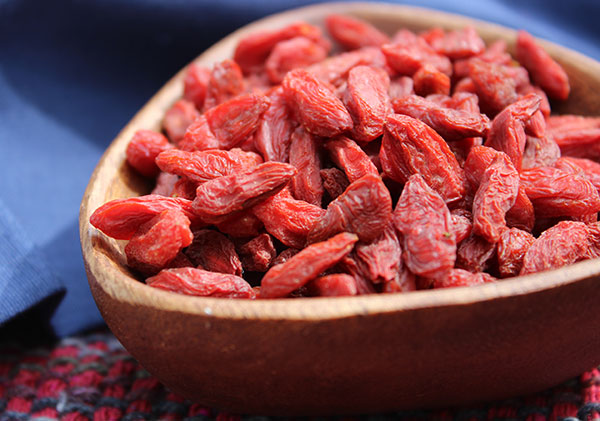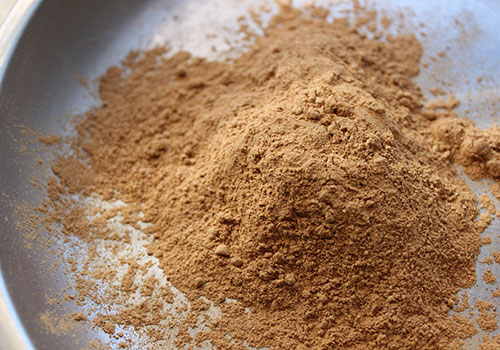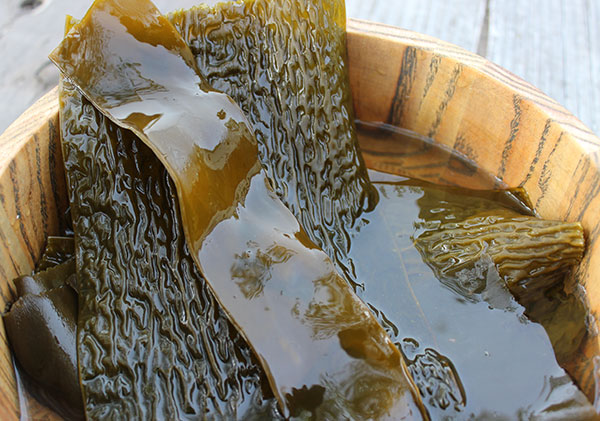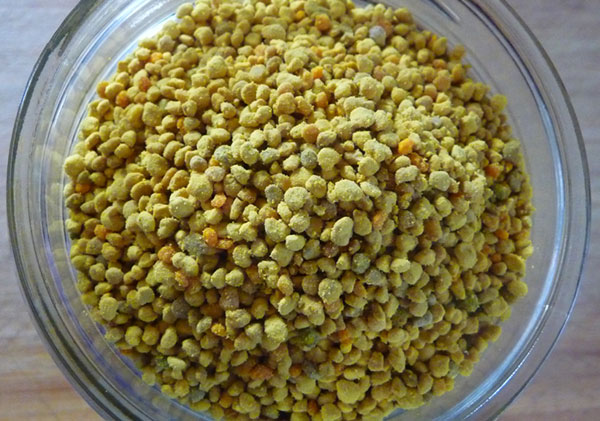This is our top 10 superfoods list of recommendations for those of you looking to increase your own nutrition potential by eating some of the best quality “nutritionally condensed” foods available.
As problems associated with adrenal fatigue, malnourishment, neurotoxicity and autoimmune disorders are becoming more common these days, it is sometimes necessary to look to a higher class of foods, herbs and superfruits and truly use the substances you eat as your medicinal allies.

These particular superfoods happen to be 10 of our personal favorites that can be easily added to blended drinks, recipes or taken in supplement form.
Whether you are embarking on a complete dietary makeover or merely inspired to begin increasing immediate nutrient uptake, this list below will give you some options of where you might want to begin.
These are plant-based foods, tonics, algaes and extracts chosen to provide a full spectrum of possibilities for naturally enhancing energy levels and encouraging greater states of health and well-being.
Comprised of unique and/or highly concentrated constituents not present in everyday foods that we typically consume, this group may include condensed amounts of minerals, polysaccharides, chlorophyll, omega-3’s, enzymes, carotenoids, B vitamins, vitamin C, adaptogenic elements as well as numerous plant-specific compounds.
Certain superfoods on this list may personally call out to you, whereas others might be less appropriate for you and your current health goals.
Learn more about each specific variety on the pages of this website.
The Top 10 Superfoods List
1) Reishi Mushroom

Reishi is a medicinal mushroom variety commonly used today in the form of a powdered or encapsulated hot water extract as well as a decocted tea. It has been utilized for centuries by Asian cultures and is classified as major Chinese tonic herb because of its qualities as an adaptogen.
Often called “the great protector”, reishi can assist in modulating immune response with effects that calm and protect the central nervous system as well as support liver and cardiovascular functions when taken on a consistent basis.
Containing a high number of beta-glucan polysaccharides and antioxidant triterpenes, like ganoderic acid, it is often used therapeutically as an anti-inflammatory and antitumor agent. (*)
As a liver tonic, it helps to cleanse and nourish the blood and its hepatoprotective compounds, like ganoderic acid A and ganoderic acid B, have been recognized to protect against liver damage.
In recent years, the “spores” or “seeds” of the reishi mushroom (Ganoderma lucidum) have been identified to contain particularly high amounts of health-enhancing triterpenes and are now frequently sold as a spore oil, spore powder, triterpene crystals as well as added to reishi mushroom extracts. (*)
2) Spirulina

Spirulina is a type of microalgae that was coined “the best food for the future” because of its excellent capacity at producing high quality condensed complete protein and essential nutrients more efficiently than most other food sources. It is in fact one of the highest protein-rich foods in the plant kingdom, with one tablespoon of quality spirulina containing between 5-6 grams of bioavailable protein content.
Spirulina has been widely used in West Africa since the 1970’s to treat malnutrition and was also popularized by NASA, who utilized it as a nutritional food supplement for American astronauts and later proposed it as a potential cultivar for long-term space travel. (*)
As an energizing as well as detoxifying source of numerous other phytonutrients, antioxidants, essential vitamins and minerals, we consider it an ideal top 10 superfood for modern day living. (*)
Including chlorophyll, zeaxanthin, beta-carotene, GLA, iron and of course the extensively researched blue-green pigment called phycocyanin, green powders can be added to blended protein drinks, green smoothies or simply mixed into water. For convenience, it can likewise be consumed in tablet or capsule form.
While spirulina is our personal favorite, other types of microalgae to consider also may include: marine phytoplankton, chlorella and blue green algae (AFA).
3) Goji Berries

While only recently popularized here in the West, goji berries (also known as lycii berries or lycium fruit) are another prized major tonic herb highly valued in Chinese herbal therapies.
Commonly brewed with other herbs in tea preparations, they are known for their ability to replenish Yin Jing essence, the primordial energy of the body associated with the kidney-adrenal system, sexual libido and fertility. They are nourishing in cases of kidney Yin deficiency, often associated with adrenal burnout, and additionally help to build the blood and are tonifying to the liver organ.
The brightly pigmented red-orange fruit also contain carotenoid antioxidants, like beta-carotene and zeaxanthin, along with the species-specific group of polysaccharides referred to as Lycium barbarum polysaccharides or LBPs. (*) These long chain sugars are immune modulating substances that have been show to help increase the production of certain enzymatic antioxidants, like superoxide dismutase or SOD. (*)
While dried or reconstituted forms are considered quite nutritious when consumed like raisins or used in shakes and smoothies, simmering the fruits in hot water, tea formulas, soups, stews or grains is traditionally believed to increase the release of goji’s beneficial nutrients.
4) Aloe Vera Gel

Many people around the world are familiar with aloe vera and its topical use as a skin moisturizer, but what many do not realize is that the inner gelatinous fillet of the leaf can also be consumed as a highly nutritious fibrous food source. Fresh aloe, filleted from the Aloe barbadensis species, or the bottled gel is commonly used in smoothies, but can also be blended into a variety of other drinks and sometimes recipes.
Aloe is rich in glucomannan and other water soluble polysaccharides which are a source of dietary fiber. Beneficial as a mild laxative, these components are soothing and healing to the digestive tract, help to neutralize an overly acidic body pH and have a cooling effect on inflamed conditions such as colitis, ulcers, IBS, acid reflux and diverticulitis. (*)
Aloe vera gel is additionally hydrating to the body, activates immune boosting antibodies and helps to purify the liver by eliminating undigested waste material as well as toxins.
The gel is high in MSM content, plant-based sulfur, and not only softens and beautifies the skin when applied directly, but also heals from the inside out, providing moisturizing benefits when consumed. (More on differences between aloe gel and juice here.)
5) Hemp Seeds

Hemp seeds and powders are a protein-rich top 10 superfood containing good amounts of all essential amino acids. A little less than ½C (or 100g) of hemp seeds contains 37g of protein, around twice the amount as most other nut and seed varieties, and meets 73% of the Daily Value for protein, based on a 2,000 calorie diet.
In addition, hemp seed protein is considered easier to digest because of its two high-quality storage proteins, edestin and albumin, as well as its lack of oligosaccharides and trypsin inhibitors, which can affect protein absorption.
The PUFA-rich seeds are also known for their high omega-3 content, offering omega-6 and omega-3 in a balanced 4:1 ratio. It is good to include plenty of omega-3 fatty acids and oils in the diet on a regular basis for proper neurological functioning and inflammatory regulation. (*) Hemp seeds additionally contain gamma linolenic acid (GLA), vitamin E as well as magnesium beneficial for healthy skin, hair and bones.
Hemp seeds themselves are quite small and hard to adequately chew, but when blended into drinks can provide a protein-rich bioavailable beverage with concentrated amounts of omega-3 fats, typically lacking in many diets.
Hemp protein concentrates are also available in powdered form and are frequently used in plant-based protein shakes, along with spirulina, for body building workout regimens.
6) He Shou Wu Root

He shou wu, also called Polygonum multiflorum or fo-ti, is a premier tonic adaptogen and energy restorative. In Chinese herbalism, regular consumption of the teas or extracts is specifically utilized for tonifying Jing and kidney Yin, the deep primordial stored life force that is believed to fuel all other energies. The Taoist philosophy of “internal alchemy” claims that preserving one’s Jing is an essential component to prolonging one’s lifespan.
In today’s modern fast paced world, many people are burning up this stored energy reserve with ongoing stress, overwork and excessive lifestyle habits that can over time cause adrenal fatigue and deep depletion of kidney Yin.
As one of our personal favorite top 10 superfoods, it additionally serves to build the blood, fortify the muscles, bones and tendons as well as enhance sexual libido and fertility in both men and women. A common herbal ingredient in numerous longevity preparations, he shou wu is highly revered for its ability to encourage hair growth and slow down the effects of aging, including the premature graying of the hair.
It is always important to use “prepared” fo-ti root and supplements as opposed to raw dried fo-ti, which can be potentially toxic to the liver in high doses. The dark, reddish-brown prepared root can be simmered in water as a tea or can be likewise consumed as a hot water extract available as a powder or in capsule form.
7) Camu Camu Berry Powder

Camu camu berry is a tropical fruit from the Amazon known for its extremely high vitamin C content and effects as a antioxidant and anti-inflammatory agent. (*)
Typically available as a powder for use in beverages and smoothies, it is a convenient way to significantly increase dietary vitamin C intake, an all-important nutrient for the modern day lifestyle. Consuming only about 1/4-1/2 a teaspoon a day is usually enough to meet adult daily requirements.
Unlike many vitamin C supplements primarily composed of the active ascorbic acid ingredient, plant-based vitamin C is a complete and complex matrix of many different natural nutrients and compounds including co-enzymes, bioflavonoids and unique co-factors that help us absorb and effectively utilize ascorbic acid without causing harmful oxalate build-up in the body.
Deficiency of this vital dietary nutrient can cause various symptoms like bruises, weak connective tissues, varicose veins, joint pain, mental weariness, scurvy and general fatigue. It is also a necessary vitamin for the production and synthesis of collagen, important for maintaining health skin and the prevention of premature wrinkling.
Also containing antioxidative anthocyanins as well as carotenoids (lutein, zeaxanthin, beta-carotene), camu camu berry powder can be a top 10 superfood supplement for nourishing the eyes and retina. Carotenoids have been shown to nutritionally support and protect the eyesight from age-related diseases like macular degeneration and cataracts. (*)
8) Kelp Seaweed

Kelp, is a general term used to describe a class of brown sea vegetables, like kombu or wakame. These are very nutritious seaweed varieties known to concentrate high levels of minerals from the seawater in which they grow. These species are, in fact, one of the most potent sources of minerals available in the plant kingdom.
Minerals are critical for maintaining a plethora of body functions. They are also needed to help produce certain antioxidants as well as assimilate vitamins and other nutrients. Because of unsustainable farming practices and low soil quality, it is much more challenging to get the required amount from the foods we eat.
Supplementing with condensed mineral-rich seaweeds helps to nutritionally enhance and fortify the diet. Containing various polysaccharides, like algin, sulfated fucoidan and laminarin, kelp is additionally known to support immune functions, nourish the skin and hair, sooth inflammation, eliminate ingested toxins and is a source of dietary fiber. (*)
Kelp seaweeds are specifically higher in bioavailable iodine content and can be helpful for correcting iodine deficiency. (*) If you do not have enough iodine in the diet you cannot make the required amount of thyroid hormones. This can cause symptoms of fatigue, low metabolism and weight gain issues associated with hypothyroidism and goiter. While some individuals may be sensitive to excessive iodine intake, taken intermittently in small doses, kelp can provide an easy way to meet your iodine requirements.
Whole pieces of kelp can be cooked into foods, like grains, beans and soups, or likewise utilized as a raw powder or granules added to foods as a salt replacement or taken in supplement form. It is important to purchase high quality seaweeds from reputable companies who harvest from clean ocean environments as well as test for radioactive isotopes and other potential contaminants.
9) Bee Pollen

Bee pollen is created by one of the master pollinators of the earth, the honeybee. It has been collected from bee hives and used by many ancient civilizations for its health enhancing properties and energizing effects on the body.
It is the caviar of top 10 superfoods and one of the best natural multivitamins available, even when taken in very small doses. Considered one of nature’s most complete and concentrated foods, it has a full spectrum of nutrients, protein and enzyme content.
In the form of tiny golden granules, bee pollen is a pre-digested food containing about 40% bioavailable protein and comprises all essential amino acids as well as vitamin C, vitamin E, rutin, beta-carotene, nucleic acids, polysaccharides, lecithin, B vitamins (like folic acid) and phenolic compounds. (*)
High quality bee pollens are subtly sweet and slightly tangy and can be consumed straight or added to a variety of foods and drinks.
In rare cases, some people prone to asthma or pollen allergies have severe allergic reactions to the pollen when ingested, so it is good to be aware if you are new to consuming it. Ayurvedically speaking, bee pollen is also a heating food. It is best to start with small amounts (one or two granules) and build up to larger doses (between 1/4t-1t) to make sure it works with your particular body type.
10) Maca Root

Maca is a cruciferous radish-like tuber that grows at high elevations in the South American Andes mountains where it has been utilized as a root vegetable for centuries.
It is an adaptogen that has itself “adapted” to the poor soils and colder dry environments that exist at these higher altitudes and is subsequently identified for its ability to increase the physical endurance of the people living in these harsher climate zones. In today’s fast-paced world, herbal adaptogens like maca can be a valuable nutritional adjunct to the diet to help us achieve the kind stamina necessary to achieve our long-term goals.
Often referred to as “Peruvian ginseng” for its energizing effects as a natural non-caffeinated stimulant, the root is also known to increase sexual libido (*), relieve depression, normalize hormonal activity (*), improve fertility rate as well as build muscle and strong bones.
The malty tasting powder can be added to shakes, elixirs or incorporated into a variety of dessert recipes. Maca is commonly imported from South America as a raw or gelatinized powder. The heated gelatinized powders are now believed to have higher health benefits over raw versions, as processing removes the tough root fiber as well as the goitrogen content.
Top 10 Superfoods, A Global Merging
We are now living in an age of abundance where we have access to and can share top superfoods from around the world. It is a time when technology, computers and communications systems are helping to spread information like never before in human history. This has created a beautiful blending of cultures merging together as one global community sharing long revered herbs, berries, plants and protein sources that have been traditionally used for centuries.
Some of the top 10 superfoods offered on our list are in part a result of this cultural integration. They can be a great place to start for improving overall health, but there are also many other superfoods listed on the pages of this website that may be more specific for you and your unique constitution and health objectives.
Precautions:
Always consult your health care provider when making dietary changes, especially if pregnant or breastfeeding, when taking prescription medications and/or experiencing extreme health issues.
Our YouTube Video

